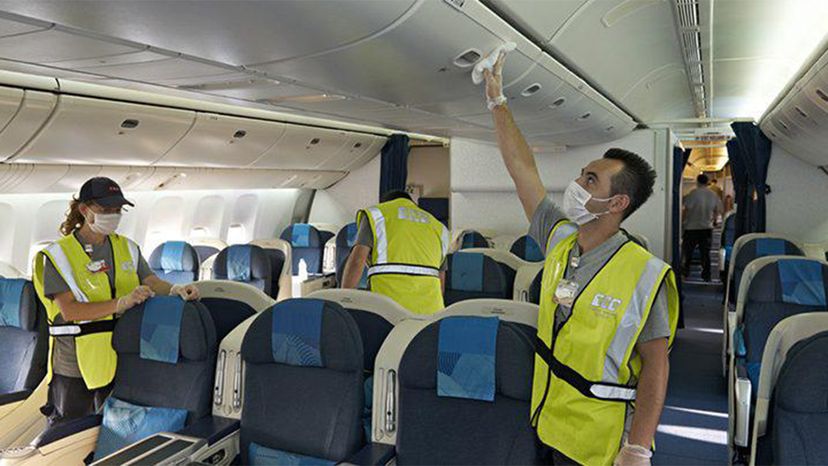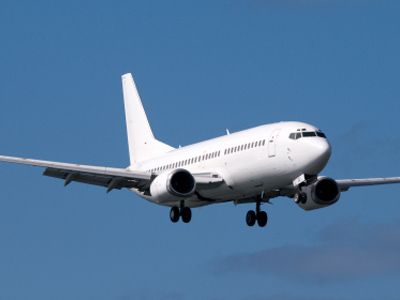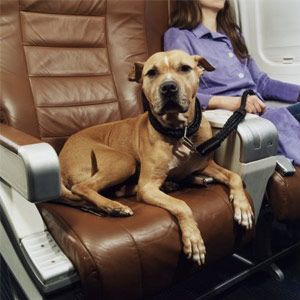
If you're a passenger on one of the more than 10 million scheduled passenger flights that depart from U.S. airports each year, you may barely even notice the crew of cleaning workers who hurry onto the airliner after your flight, in order to get the cabin ready for the next group of passengers who'll soon be boarding.
Nevertheless, cleaning airliners is a crucial part of air travel, and not just because it makes it more pleasant for passengers to spend several hours in a relatively crowded, confined space. It's also important for passengers' health to remove refuse and clean dirty surfaces that might harbor germs that could make people sick.
Advertisement
"Airlines work continuously – both between flights and overnight – to provide a clean and comfortable cabin area for their passengers," Vaughn Jennings, a spokesperson for Airlines for America, an industry group, says via email.
It's a job that has to be accomplished in a matter of minutes, given the quick turnaround times that airlines have to meet, and it takes a systematic, highly-organized effort to get it done.
"The cleanliness of an airline cabin is about both function — health and safety — as well as the overall passenger experience," John Alford, vice-president of cabin appearance for ABM Aviation, which cleans close to one million airplane cabins each year for airlines in the U.S. and Europe, explains in an email. "A great deal of attention is placed on disinfection of food prep areas, lavatory high usage areas, seat eating areas – tray tables – and the aircraft's overall appearance."
These days, cleaning companies use sophisticated software and wireless devices to track when planes arrive and determine what sort of cleaning they need, and to dispatch crews and follow their progress, as this 2015 BBC story details. ABM's team leaders, for example, each carry a hand-held device that gives them all the pertinent information on the particular plane they're about to clean.
"Our technology allows us to look deeper into just-in-time manpower allocation," Alford explains. "We can dispatch employees as the plane gets there."
The precise steps in cleaning an airline cabin depend upon many factors, such as the time the plane will be on the ground and whether the flight is domestic or international. "Short-haul or domestic flights typically return to the skies quickly, so there's less time to clean these planes than those used for international flights," Alford says.
To deal with that variation, ABM has three different types of cleaning operations, according to Alford.
- Turn clean: "This clean is designed to accommodate an aircraft that will 'turn' and leave again quickly," Alford says. "These cleans are generally light cleans with a focus on galley areas, lavatory cleanliness and trash removal from the cabin and passenger areas."
- Overnight Clean: "This clean is performed on aircraft that have flown all their routes for the day and are to remain overnight, generally between 8 to 10 hours," Alford says. "This clean is enhanced with a larger focus on the customer areas in and around seats, while continuing to also clean the galley and lavatory areas."
- Deep Clean: "This clean is a detail clean, much like you would see performed on a car," Alford says. "The seat areas and many surfaces are removed to expose the inner workings of the seat, compartments, cabinets and storage areas. Some airlines have specialized equipment that helps with a deep clean."
Depending upon the clean type and the particular airline's specifications, it may take between five and 12 people equipped with cordless vacuums and disinfectants to get the job done. They move through the plane in a systematic fashion. "Each team member is assigned a task to complete, per our internal process flows," Alford explains.
The toughest jobs are the turn cleans, because the amount of time it takes for passengers to get off the plane can vary, and planes sometimes arrive behind schedule, putting the cleaning crews under even more time pressure. "When planes are late, we look to increase the manpower onboard, which allows us to complete the required functions, without affecting the passenger experience," Alford says.
Another challenge for cleaning crews is dealing with the possessions that travelers sometimes inadvertently leave behind on planes.
"Any found items go through a specific chain of custody process, which engages the individual who finds the items, the crew leader and the airline partner," Alford explains. "Items are logged, contents recorded if needed — e.g. everything within a found purse. A photo is taken of the item, and then the item is signed for and taken over by the airline. From electronics to personal items, the cleaning team finds items that go to the airlines' lost and found every day."
Advertisement

